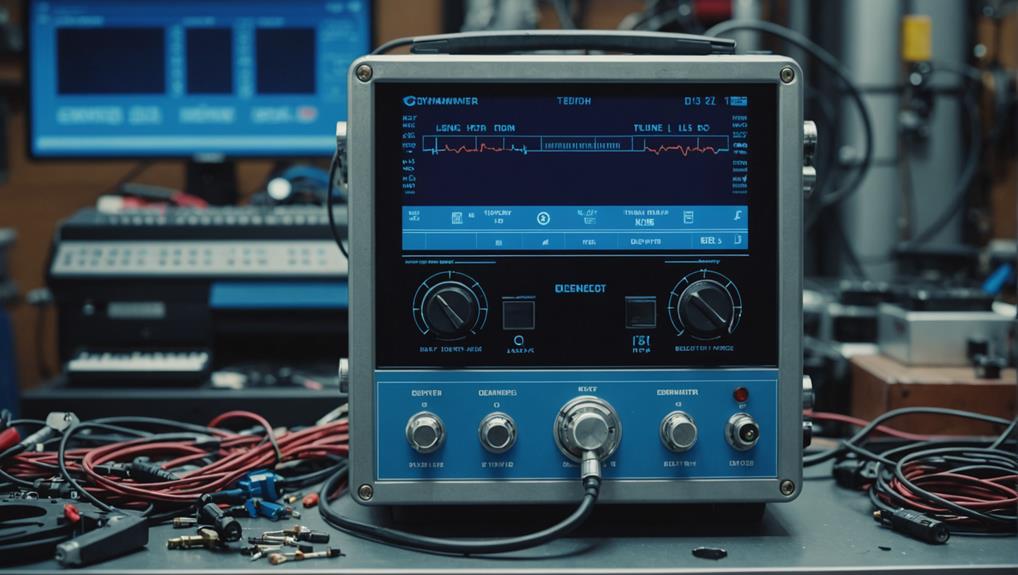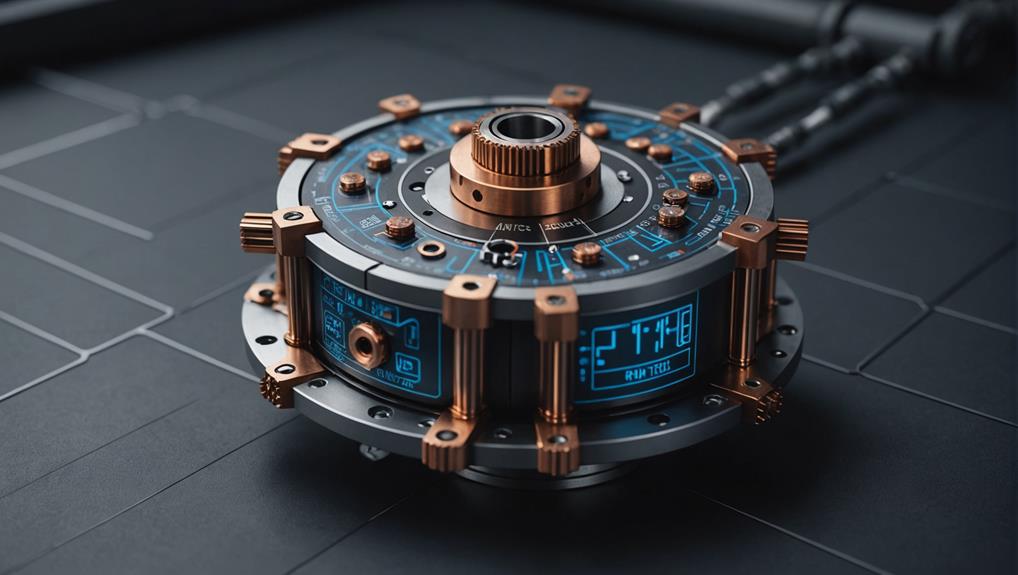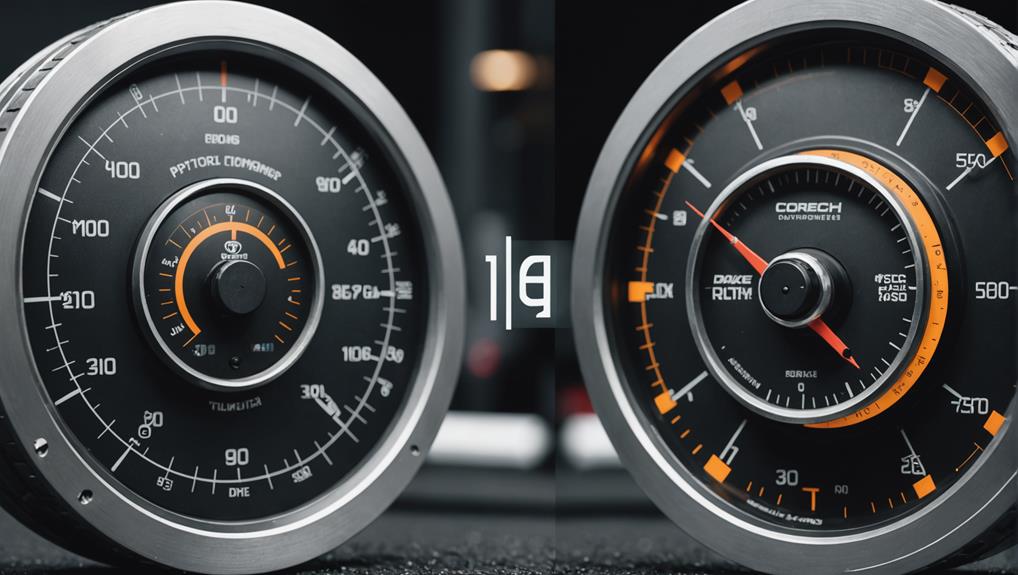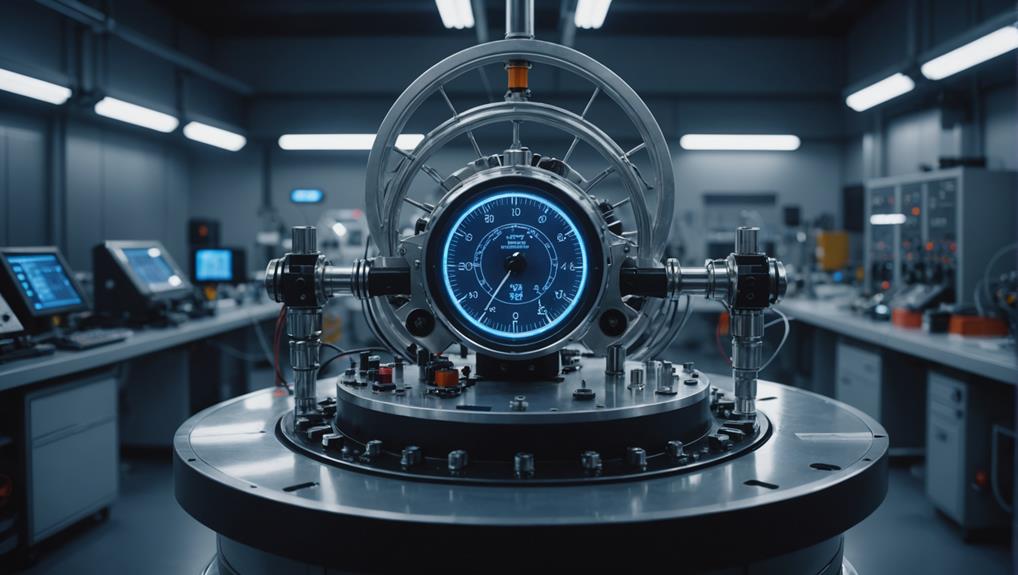
How Dynamometers Enhance Engine Diagnostics and Testing
Necessitating precise measurements, dynamometers unlock the secrets of engine performance, but what else can they reveal about engine diagnostics and testing?
Momentum is crucial in inertia dynamometer testing, as it directly influences the accuracy of engine performance measurements, including horsepower and torque output.
The accurate measurement of momentum is vital, as it ensures reliable test results and is directly proportional to the torque output of the engine.
Understanding the connection between inertia and torque is essential in optimising engine performance.
Inertia, a fundamental principle, affects an engine's ability to produce torque, decreasing with increasing rotational speed.
Recognising the significance of momentum enables engineers to tap the full potential of their engine designs and achieve peak performance.
Momentum in dynamometer testing is a fundamental concept that plays a vital role in determining an engine's performance and efficiency.
Calculated by measuring the rate of change of angular velocity, momentum is directly proportional to the torque output of the engine. This highlights the importance of accurately measuring the moment of inertia of the dynamometer and the engine being tested, as it affects the momentum of the system.
Inertia dynamometer testing involves acceleration and steady-state tests, which require careful consideration of momentum to guarantee accurate measurement of torque and power output.
Momentum's accurate measurement is pivotal, as it directly affects the calculation of engine performance parameters such as horsepower and torque output. Engineers can guarantee reliable and accurate test results, vital for optimising engine performance and efficiency, if they grasp the role of momentum in dynamometer testing.
The rotational inertia of an engine and its attached components substantially influences its general performance.
The engine's ability to accelerate and decelerate is directly affected, impacting its aggregate responsiveness and torque delivery. When an engine has high rotational inertia, it tends to resist changes in speed, resulting in slower acceleration and more sluggish performance.
Conversely, an engine with low rotational inertia can accelerate more quickly and respond rapidly to throttle input.
Inertia plays a vital role in the engine's ability to produce torque. As the engine's rotational speed increases, its inertia increases, making it more difficult to accelerate further, leading to a decrease in torque output, ultimately affecting the engine's aggregate performance.
Comprehending the connection between inertia and torque is vital in optimising engine performance, allowing engineers to design engines that can efficiently produce power while minimising the negative effects of inertia.
Recognising the significance of inertia in engine performance, manufacturers can develop more efficient and responsive powertrains that meet the demands of modern drivers.
Accurately measuring momentum in inertia testing is crucial to understanding an engine's true performance potential.
This involves measuring an engine's torque output while connected to a dynamometer, which absorbs the engine's power and measures its rotational speed.
To calculate momentum, testers must determine the product of an object's mass and velocity.
In the context of inertia testing, this means measuring the engine's rotational speed and the dynamometer's inertia, typically represented as its moment of inertia.
Engine performance assessment relies heavily on accurate momentum measurement, which can be influenced by several factors in inertia testing.
These factors affecting momentum measurement can be broadly categorised into two groups: internal and external factors. Internal factors comprise the dynamometer's mechanical design, sensor calibration, and data acquisition system, all of which impact measurement precision.
External factors, on the other hand, encompass environmental conditions such as temperature, humidity, and air pressure, which affect the test object's behaviour and subsequently the momentum measurement.
The test object's design and configuration, including its mass, shape, and surface finish, also influence the momentum reading. Moreover, the testing procedure, including acceleration and deceleration rates, can impact the accuracy of the momentum measurement.
It is essential to grasp and control these factors to ensure reliable and accurate inertia testing results.
Accurate momentum data is vital in inertia dynamometer testing, as it directly impacts the calculation of engine power output and torque values.
The importance of precise momentum data lies in its effect on the accuracy of test results, particularly in determining peak power or torque RPM.
Overcoming inertia measurement challenges and ensuring momentum data accuracy are vital to obtaining reliable and trustworthy test outcomes.
Inertia dynamometer testing relies heavily on precise momentum data, as even slight inaccuracies can have a profound impact on the reliability of test results.
Inaccurate inertia measurements can lead to flawed test outcomes, compromising the validity of the entire testing process. This highlights the significance of addressing inertia measurement challenges.
High inertia, in particular, poses unique measurement obstacles.
As inertia values increase, the dynamometer's ability to accurately capture momentum data becomes increasingly compromised due to greater mechanical stress, which can lead to measurement errors.
Furthermore, high inertia often necessitates specialized testing equipment, which can be difficult to calibrate.
To overcome these challenges, testing professionals must employ innovative measurement techniques and cutting-edge equipment.
Accurate inertia measurements can be verified, even in high-inertia testing scenarios, through the use of such techniques and equipment.
Prioritizing accurate inertia measurements is crucial, as it guarantees reliable test results, ultimately enhancing the integrity of dynamometer testing.
Precise momentum data is the foundation upon which reliable dynamometer testing is built.
Inertia measurement challenges arise when momentum data accuracy is compromised, leading to incorrect calculations and undermining the entire testing process.
To ensure accurate momentum data, factors such as data sampling rate, sensor calibration, and noise reduction techniques must be examined.
High-speed data acquisition systems provide precise momentum measurements, enabling engineers to capture the dynamic behaviour of the system under test.
Advanced signal processing algorithms filter out noise and disturbances, ensuring the momentum data accurately reflects the system's performance.
Accurate momentum data is indispensable in dynamometer testing, as it enables the calculation of torque and other performance metrics.
With precise momentum data, engineers can confidently rely on the test results, making informed decisions about system design and optimisation.
The integrity of the testing process is maintained, and the reliability of the results is guaranteed.
As rotational motion of an engine's components is fundamental to inertia dynamometer testing, momentum calculation becomes vital in determining engine performance and efficiency.
This calculation is imperative to accurately measure torque and power output. Momentum of an inertia system is calculated by multiplying mass of rotating components by their velocity, with unit of measurement typically being kilogram-metres per second (kg·m/s).
Moment of inertia of an object is a pivotal factor in calculating its momentum, as it determines object's resistance to changes in rotational motion.
In inertia dynamometer testing, momentum calculation involves measuring angular velocity of engine's crankshaft and moment of inertia of rotating components, such as pistons, connecting rods, and crankshaft. Accurate momentum calculation is vital, as it directly affects measurement of torque and power output, which can impact engine design, performance, and safety.
Breaking down the complexities of momentum measurement, it becomes clear that inertia plays a vital role in determining the precision of these calculations.
Inertia, the tendency of an object to resist changes in its motion, directly influences momentum, the product of an object's mass and velocity.
In an inertia dynamometer, the system's inertia is utilised to measure the momentum of rotating components.
The inertia of the system affects the precision of momentum measurement, as it determines resistance to changes in motion.
A thorough understanding of the inertial properties of the system is crucial to guarantee accurate momentum measurements.
Engine design relies heavily on a deep comprehension of momentum and inertia, as these fundamental principles govern the performance and efficiency of internal combustion engines.
A thorough grasp of inertia is vital in designing engines that can efficiently convert chemical energy from fuel into mechanical energy. Inertia plays a significant role in determining the torque output of an engine, as it directly affects the rotating components' ability to resist changes in rotational velocity.
The inertial properties of moving components, such as the crankshaft, pistons, and connecting rods, must be carefully considered when designing an engine.
These components' inertia influences the engine's ability to produce torque, which is necessary for propelling a vehicle or powering machinery. Optimising the inertial characteristics of these components can improve the engine's collective efficiency, power output, and responsiveness.
A deep understanding of momentum and inertia enables engineers to develop more effective engine management systems, which can additionally boost performance and reduce emissions.
Capturing accurate momentum data is an essential aspect of inertia dynamometer testing, which can be achieved through the utilization of advanced tools like Windyn.
This cutting-edge technology enables engineers to precisely measure momentum, a pivotal parameter in evaluating engine performance. Windyn's capabilities allow testing teams to acquire reliable data to refine engine design and optimize torque output.
Windyn's advanced sensors and sophisticated algorithms facilitate the capture of high-fidelity momentum data, enabling engineers to accurately calculate engine torque, a critical parameter in engine performance evaluation.
The momentum data helps identify performance bottlenecks, enabling targeted improvements to engine design. Furthermore, precise momentum data enables engineers to fine-tune engine calibration, leading to improved performance, fuel efficiency, and reduced emissions.
Windyn's capabilities offer several benefits, including:
With accurate momentum data established as crucial, Hyper Power's Inertia Systems Advantage takes centre stage as a cutting-edge solution harnessing the SuperFlow engine dynamometer with WinDyn software.
This innovative system accurately determines inertia power and adds it to measured torque, providing a thorough understanding of an engine's capabilities. The Specification channel, Inrtia, represents the total inertia of moving parts, which, when combined with the acceleration rate, provides a close approximation of torque used in acceleration.
Through performing acceleration and steady-state tests at wide open throttle, Hyper Power's Inertia Systems Advantage determines peak power or torque RPM, enabling adjustment of the Inrtia value to intersect with steady-state test data for accurate inertia measurement. This results in a reliable and efficient method for determining total inertia, allowing users to optimise engine design and performance with confidence.
In summary, momentum plays a crucial role in inertia dynamometer testing, as it significantly affects engine performance and measurement accuracy. Ensuring accurate momentum data is essential to obtain reliable test results. The role of inertia in momentum measurement cannot be overstated, and its consideration is vital in engine design. By capturing momentum data with advanced tools like Windyn and utilising Hyper Power's inertia systems, engineers can optimise engine performance and make informed design decisions. If you have any questions about our services, including Custom Dyno Solutions, Installation and Setup, Training and Certification, Technical Support and Maintenance, Software Updates and Upgrades, Diagnostics and Performance Analysis, Rental Services, Dynamometer Testing Services, and Accessories and Parts, please do not hesitate to contact Hyper Power.

Necessitating precise measurements, dynamometers unlock the secrets of engine performance, but what else can they reveal about engine diagnostics and testing?

Navigating the complexities of torque measurement requires a deep understanding of the underlying principles and mechanisms to ensure accurate results.

Precise control and optimization of engine performance await, but only for those who unlock the secrets of dynamometer-driven data analysis.

Gaining insight into the differences between inertia and brake dynamometers is crucial for ensuring accurate testing results in various industries.

Tapping into the precise measurement capabilities of dynamometers, uncover the secrets to optimizing fuel efficiency and slashing emissions in the automotive industry.

Witness the importance of rigorous safety protocols and best practices in dynamometer testing to avoid catastrophic failures and ensure accurate results.

Harnessing the nuances of precision measurement is crucial to avoiding costly errors in dynamometer testing, but what are the key factors to consider?

Witness the transformative power of dynamometers in unlocking your vehicle’s hidden performance potential, but only if you know how to harness their precision.